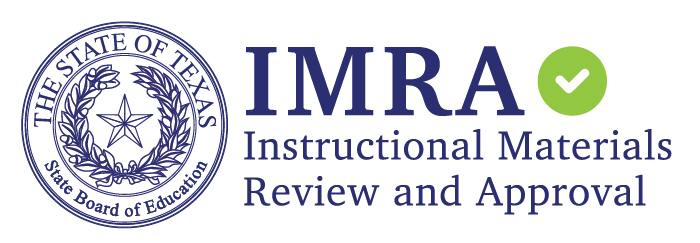Background
House Bill (HB) 3( opens in new window), issued by the 86th Texas Legislature in 2019, directs all Texas school districts to provide phonics curriculum that uses systematic, direct instruction in kindergarten through third grade to ensure all students obtain necessary early-literacy skills. Commissioner rule 19 Texas Administrative Code (TAC) §74.2001 also became effective in April 2022 and outlines specific criteria that phonics materials must do (19 TAC §74.2001(b)(1)), may do (19 TAC §74.2001(b)(2)), and may not do (19 TAC §74.2001(b)(3)).
To assist LEAs in complying with statute and rule, TEA developed English and Spanish K-3 phonics rubrics and facilitated the review of several commonly used phonics materials through the Texas Resource Review (TRR) to determine which materials meet the criteria outlined in rule. In March 2022, TEA selected materials for this initial review cycle if they were:
- adopted by the State Board of Education for K–3 English or Spanish language arts and reading,
- nominated by at least 10% of LEAs, or
- voluntarily submitted by the publisher.
Evaluation Process
To date, materials were subject to a three-tiered review conducted by Texas educators to determine compliance with 19 TAC §74.2001(b)(1). In conducting the review, the educator teams verified:
- compliance with 19 TAC §74.2001(b)(1)(A), which involved a TEKS-correlation analysis to ensure materials cover 100% of the phonics-specific Texas Essential Knowledge and Skills
- compliance with 19 TAC §74.2001(b)(1)(B)-(G), which involved the use of a rubric aligned to each enumerated item in the rule, and
- compliance with 19 TAC §74.2001(b)(1)(H), which involved earning the maximum number of points for the majority of the scored TRR rubric indicators in each rubrics category and verification that the material did not earn zero points for any scored TRR rubric indicator.
This three-tiered review process has been fully completed for the set of materials selected for review in March 2022, such that TEA is able to publish a list of materials that fully comply with 19 TAC §74.2001(b)(1).
Additionally, this initial cycle of materials are being analyzed to ensure they do not conflict with 19 TAC §74.2001(b)(3)(A), which prohibits certain instructional practices. This phase of the review is ongoing but will be complete by the end of April.
An additional section of the rule, 19 TAC §74.2001(b)(4), allows use of materials that do not comply with all of the provisions of 19 TAC §74.2001(b)(1), if the materials have an evidence base, and as long as they are used with materials that do fully comply 19 TAC §74.2001(b)(1). In the coming months, the publishers that participated in this review cycle and who have products that failed to fully comply with 19 TAC §74.2001(b)(1) will be given the opportunity to provide evidence-base information.
Next Steps
LEAs should review the List of Compliant Phonics Programs and the phonics FAQs and evaluate their current approach to phonics instruction to ensure compliance with the statute and rule. If currently adopted materials do not comply, LEAs may use the information provided on the TRR website to select new material from the list, modify currently adopted materials to address areas of non-compliance, or select materials that were not reviewed if they are determined to be compliant after local review.
TEA intends to conduct additional phonics reviews in the future. Districts may request reviews of a specific product by completing the District TRR Nomination Form( opens in new window). Additionally, TEA will evaluate and publish the evidence-base information supplied by publishers with materials reviewed in the current cycle.

